Step-by-step installation of a wall-hung toilet
Are you faced with the choice of which toilet to buy - floor-mounted or wall-hung? In this case, will you have to install it anyway? I’ll be honest: if you don’t want to bother, the first option is better. But the second one will look much more compact and prettier, there will be much less noise from it when draining water, and it will be easier to clean. I think there are more benefits in the long run, and it's worth the hassle now. Moreover, I will help you do this and even suggest one more economical option.
The content of the article
Design and types of wall-hung toilets
First, I propose to delve a little into the topic. Any wall-hung toilet consists of the following elements:
- an installation is a frame hidden in the wall on which everything else is attached;
- the bowl is the only visible part (not counting the flush button);
- tank - made of durable plastic, located inside the installation and hidden by a wall; to avoid condensation, it is additionally treated with styrene.
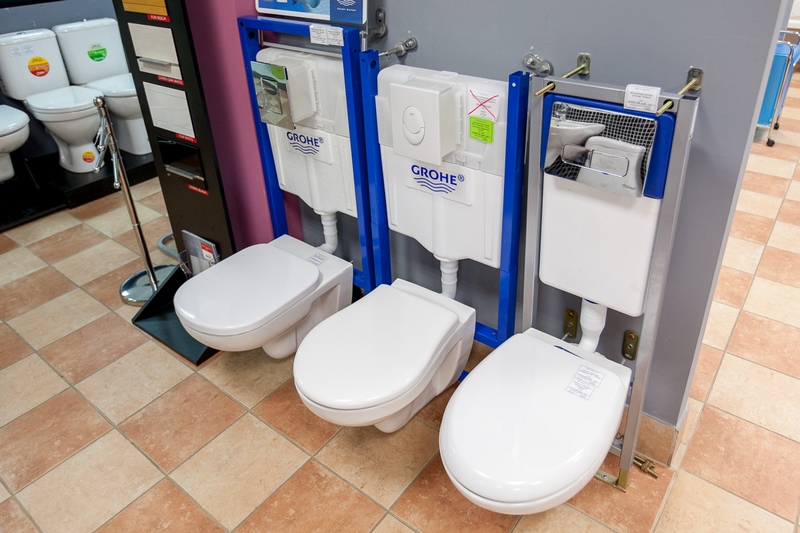
The range of bowls in plumbing stores is huge, so you can choose any shape, material, color and size. There are also many additional “gadgets”:
- no rim - thanks to this, the toilet becomes much less dirty and easier to clean;
- bidet function - retractable nozzle with water supply;
- backlight - for night trips to the toilet, with it you won’t have to blind yourself by turning on the light after dark;
- cover with microlift - smoothly raises and lowers the seat.
And finally, there are two types of installation: block and frame. The first is mounted on a load-bearing wall, the second is installed on the floor, which is more reliable. Also, its big advantage is the ability to adjust the height of the bowl, so you can adjust it to your own convenience.
Reference! However, the price for the frame one will be higher.
Installation of a wall-hung toilet with installation
So, let's say that you have already decided on the model and purchased everything. In the case of a hanging model, the reliability of the fastening is of great importance, since the structure must withstand the weight of not only the bowl, but also the person sitting on it. Therefore, under no circumstances should it be mounted on a plasterboard wall. It is also not advisable to install a frame installation on a wooden floor. Ideally, both the floor and walls should be concrete.
For installation you will need:
- hammer drill with concrete drills;
- roulette;
- pencil;
- spanner wrenches;
- building level;
- knife for working with drywall.
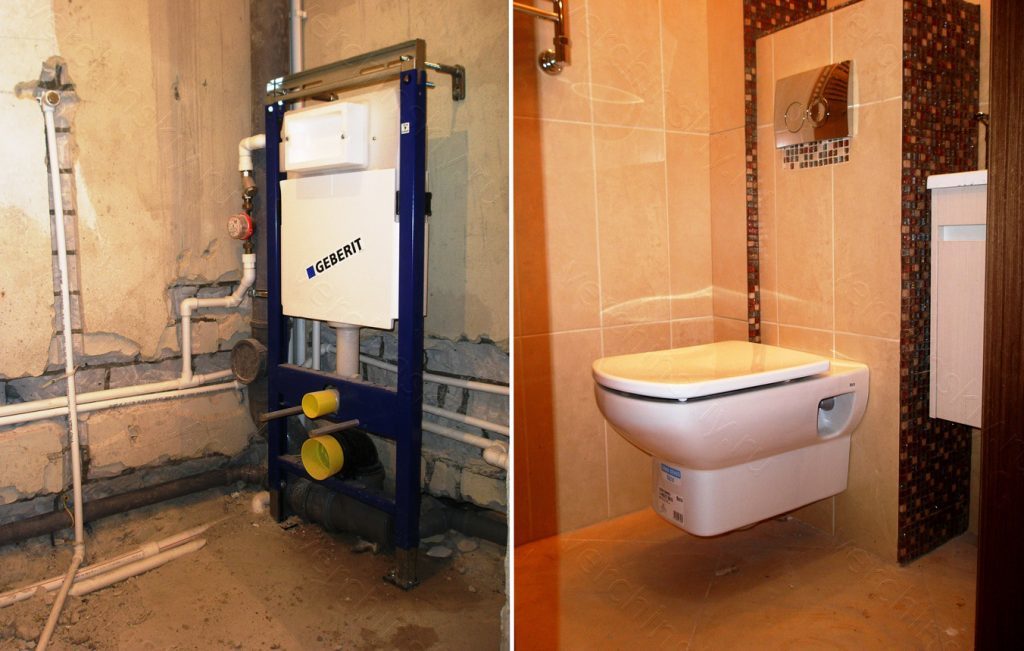
So, you have found the ideal place where you plan to spend many pleasant moments, and you have prepared the tools. We start by marking the wall: we mark the locations of the fasteners and the outlet of the sewer and water supply systems.
Attention! Be sure to use a building level to avoid distortions.
If the water supply and sewerage are located at a distance from the toilet, we connect a flexible hose and corrugated pipe to this place.
Now one of the most critical stages is securing the installation. Use a puncher to make holes at the previously marked points. Insert plastic dowels into them.Then we secure the installation using anchor screws.
Attention! If you use a frame model, then it is first screwed to the floor, and only then to the wall.
Now we install the tank inside the installation. This happens differently in different models, so strictly follow the included instructions. Connect the water supply to the tank, remembering to seal all joints (FUM tape is good for this). The sewer pipe is discharged from the bottom of the structure.
After this, you need to secure the pins on which the bowl will be suspended. They usually come complete and are screwed into special holes on the frame or block.
It's time to install the false wall. The material can be any, since it will not be subject to load, but the most common and easiest to use is moisture-resistant drywall. Previously, holes are cut in it for the pipe from the sewer, the connection of the tank to the bowl, pins for hanging it and the flush button.
Now you can start covering. At the same stage, all decorative work is carried out: gluing tiles or painting the wall. If you do this later, then, firstly, the bowl will get in the way, and secondly, there is a risk of damaging it.
So, all that remains is to hang the bowl. It is put on the pins and pressed against the wall, and so that it does not dangle, it is tightened tightly with bolts. Connects to sewer.
The final stage is installing the button. After this, you can check how everything works. Congratulations, we did it!
Installing a suspended model on a concrete base
I keep my promise and tell you how you can save money on purchasing an installation. It will be much cheaper to make it yourself, using concrete and wooden formwork. This will take more time and effort, but will save your finances.
You also need to purchase two long steel rods on which the bowl will be attached. The first stage is the same as in the previous version: the load-bearing concrete wall is marked, holes are punched at the required points. Rods are placed in them and secured with nuts.
Reference! Instead, you can pre-fill the holes with concrete adhesive.
Then we make formwork from chipboard and place it on three sides around the pipe. The front board should have holes for the pins to be threaded through.

Making a solution. His recipe is simple: 1 part cement, 2 parts sand, 3 parts crushed stone and water. Before pouring, dissolve soap or dishwashing detergent in it. We pour it into the formwork.
Concrete hardens in about a week. After this period, the formwork can be removed. Now you can attach the bowl to the pins and connect it to the sewer (don’t forget to use sealant here too). The drain tank is installed on top of the structure and is also connected to the bowl. All that remains is to cover the wall, as we did in the previous version, and install a flush button.
Thus, if you know the general principles, you can install a wall-hung toilet yourself without the help of a specialist.

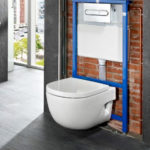
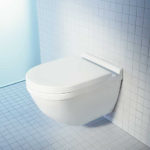
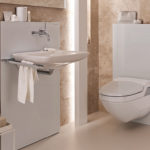
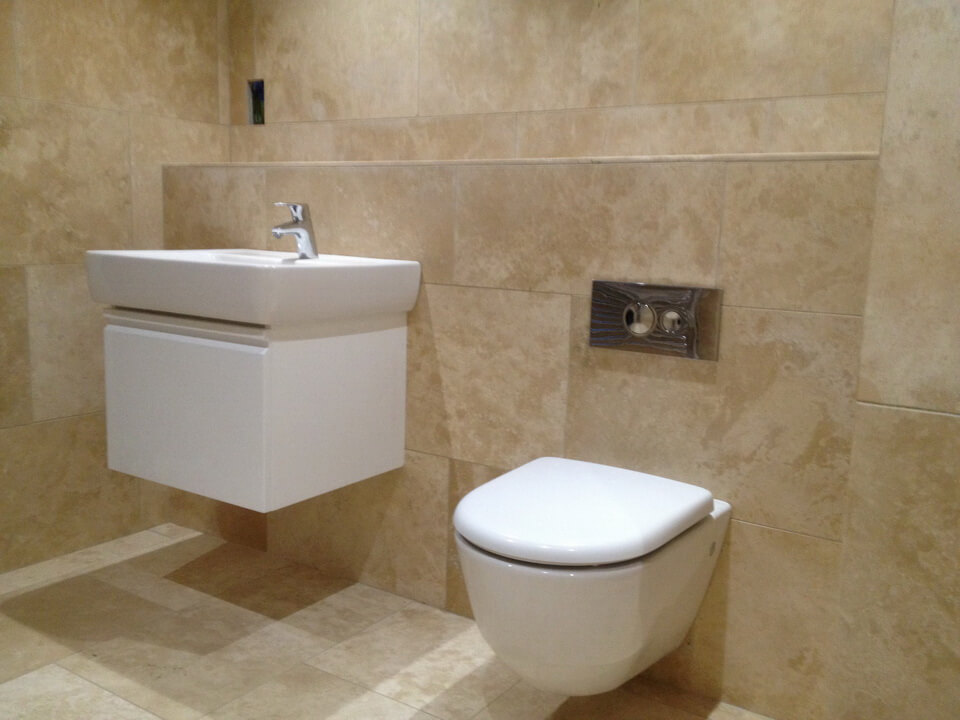
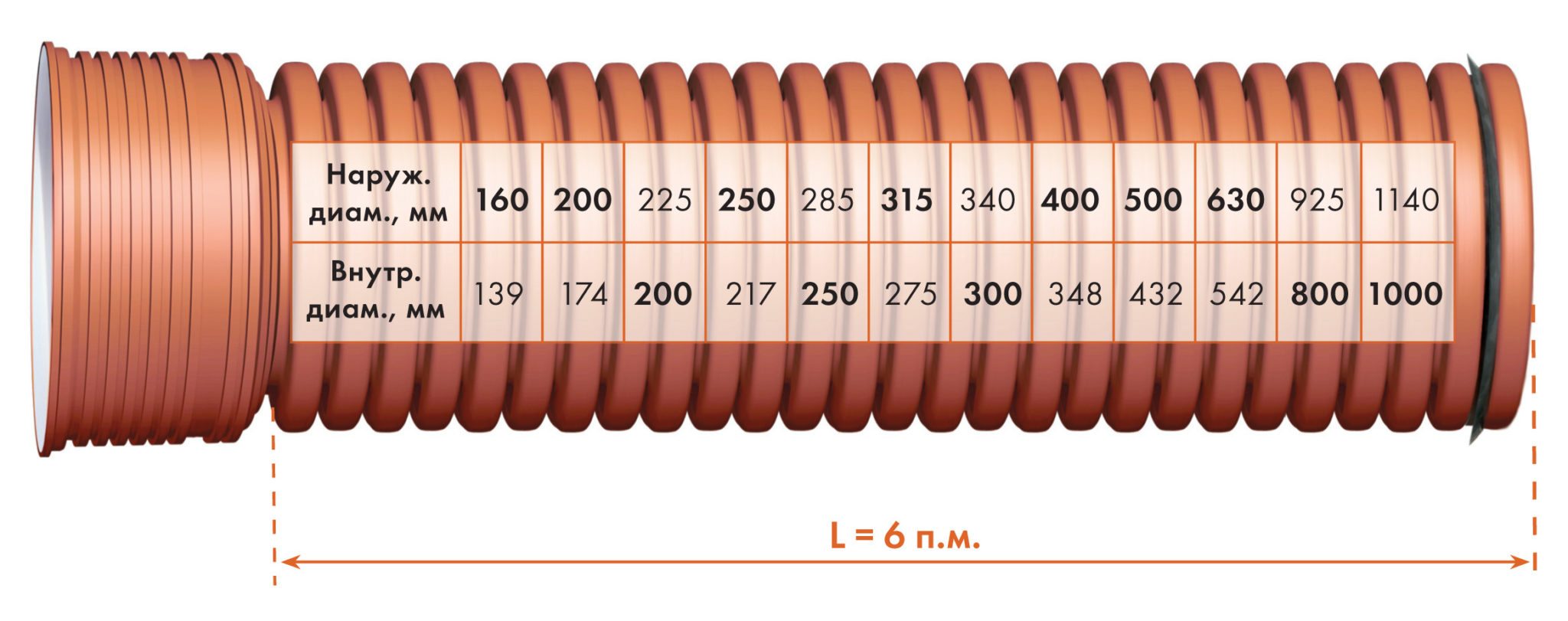
You've seen enough of YouTube and the old crusade and write all sorts of nonsense. I personally wouldn't trust you with the installation. At best, you touched the installation with your hands in a store. Sweatshirt.